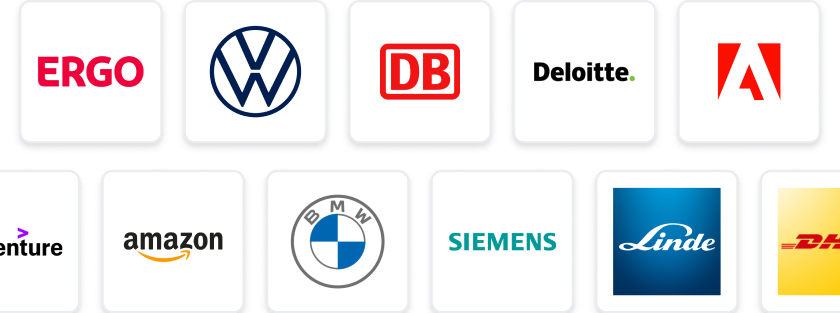At a Glance
- Tasks: Join our team to design and test innovative neurovascular implants.
- Company: We're a cutting-edge medical device company based in Oxford, focused on saving lives.
- Benefits: Gain hands-on experience in a fast-paced environment with opportunities for growth.
- Why this job: Make a real impact in healthcare while collaborating with talented professionals.
- Qualifications: Bachelor's in Mechanical or Biomedical Engineering; 2 years in medical device development required.
- Other info: Ideal for those passionate about engineering and eager to tackle real-world challenges.
The predicted salary is between 36000 - 60000 £ per year.
1. Job purpose Candidates should take the time to read all the elements of this job advert carefully Please make your application promptly. The R&D Engineer II is a key member of an engineering team based in Oxford, developing a novel neurovascular implant and delivery wire to treat intracranial aneurysms. The R&D Engineer II will actively play a vital role in product development activities and provide technical support to cross-functional project team members including Project Management, Design Assurance, Quality Assurance and Regulatory Affairs. 2. Duties and responsibilities • Support the design, build and testing of prototypes to demonstrate the technical feasibility of new design concepts. • Participate in design control activities according to ISO 13485, FDA 21 CFR Part 820.30 and standard operating procedures (SOPs). • Create and maintain drawing specifications for components, assemblies, finished product, packaging and labelling. • Participate in risk management activities according to ISO 14971, including hazard analyses, DFMEAs, PFMEAs, use-related risk assessments and UFMEAs. • Develop test plans, protocols, and reports as a part of design verification and validation to ensure that products meet design inputs and user needs. • Manage internal and external design verification and design validation activities according to verification and validation plans. • Design and 3D print internal test fixtures and tooling. • Maintain written records of materials, processes and inspection methodologies used during prototype production. • Identify product quality defects and manufacturing challenges during prototype production to inform the development of design specifications and process improvement activities. • Organise and maintain lab equipment and manage stock levels for materials and components. • Create engineering documentation within the Quality Management System according to SOPs and process engineering change orders. • Support the engineering team with the preparation of technical documentation. • Effectively communicate concepts, ideas, progress and results to team members. 3. Qualifications • Bachelor’s Degree in Mechanical Engineering or Biomedical Engineering. • A minimum of 2 (two) years of experience in class II or class III medical device product development, preferably intravascular devices. • Demonstrable analytical and problem-solving skills, and ability to handle multiple tasks in a fast- paced and results-oriented environment. • Ability to generate 3D CAD models and drawings using SolidWorks. • Ability to communicate effectively. • Ability to work independently under supervision from Senior R&D Engineers and the Director of Development.
R&D Engineer for a novel neurovascular implant employer: Oxford Endovascular Ltd
Contact Detail:
Oxford Endovascular Ltd Recruiting Team
StudySmarter Expert Advice 🤫
We think this is how you could land R&D Engineer for a novel neurovascular implant
✨Tip Number 1
Familiarize yourself with ISO 13485 and FDA regulations, as these are crucial for the role. Understanding these standards will not only help you in interviews but also demonstrate your commitment to quality in medical device development.
✨Tip Number 2
Brush up on your SolidWorks skills! Being able to generate 3D CAD models and drawings is essential for this position. Consider creating a portfolio of your previous work to showcase your design capabilities.
✨Tip Number 3
Highlight any experience you have with prototype testing and risk management activities. Be prepared to discuss specific examples where you've identified product quality defects or contributed to process improvements.
✨Tip Number 4
Effective communication is key in this role. Practice articulating complex engineering concepts clearly and concisely, as you'll need to collaborate with cross-functional teams and present your ideas effectively.
We think you need these skills to ace R&D Engineer for a novel neurovascular implant
Some tips for your application 🫡
Understand the Role: Take the time to thoroughly read the job description. Understand the key responsibilities and qualifications required for the R&D Engineer position, especially the focus on neurovascular implants and relevant regulatory standards.
Highlight Relevant Experience: In your CV and cover letter, emphasize your experience in medical device product development, particularly with class II or class III devices. Mention any specific projects related to intravascular devices that showcase your skills.
Showcase Technical Skills: Make sure to detail your proficiency in 3D CAD modeling, specifically with SolidWorks. Include examples of prototypes you have designed or tested, and any relevant design control activities you've participated in.
Communicate Effectively: In your application, demonstrate your ability to communicate complex concepts clearly. Use concise language and structure your documents well to reflect your communication skills, which are crucial for this role.
How to prepare for a job interview at Oxford Endovascular Ltd
✨Understand the Product Development Process
Make sure you familiarize yourself with the product development lifecycle, especially in the context of medical devices. Be prepared to discuss your experience with design control activities and how you've contributed to projects that align with ISO 13485 and FDA regulations.
✨Showcase Your Technical Skills
Highlight your proficiency in SolidWorks and any experience you have with 3D printing and prototyping. Bring examples of CAD models or prototypes you've worked on, and be ready to explain the design decisions you made during those projects.
✨Demonstrate Problem-Solving Abilities
Prepare to discuss specific challenges you've faced in previous roles, particularly in medical device development. Use the STAR method (Situation, Task, Action, Result) to structure your answers and showcase your analytical skills.
✨Communicate Effectively
Since effective communication is key in this role, practice articulating complex technical concepts in a clear and concise manner. Be ready to explain how you've collaborated with cross-functional teams and how you ensure everyone is aligned on project goals.
